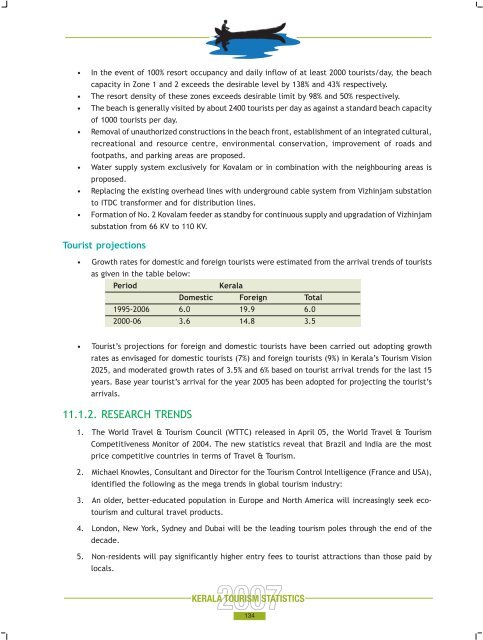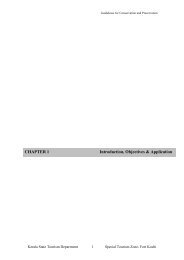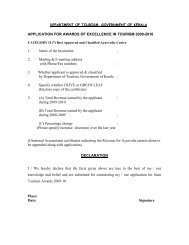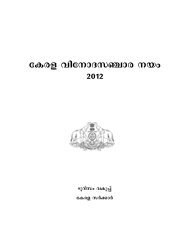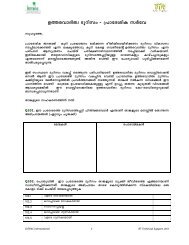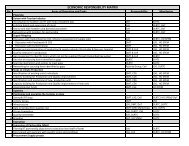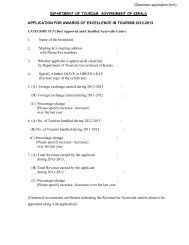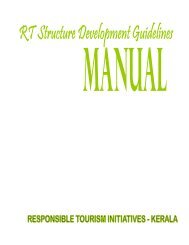Statistics Book 2007.pdf - Kerala Tourism
Statistics Book 2007.pdf - Kerala Tourism
Statistics Book 2007.pdf - Kerala Tourism
You also want an ePaper? Increase the reach of your titles
YUMPU automatically turns print PDFs into web optimized ePapers that Google loves.
• In the event of 100% resort occupancy and daily inflow of at least 2000 tourists/day, the beach<br />
capacity in Zone 1 and 2 exceeds the desirable level by 138% and 43% respectively.<br />
• The resort density of these zones exceeds desirable limit by 98% and 50% respectively.<br />
• The beach is generally visited by about 2400 tourists per day as against a standard beach capacity<br />
of 1000 tourists per day.<br />
• Removal of unauthorized constructions in the beach front, establishment of an integrated cultural,<br />
recreational and resource centre, environmental conservation, improvement of roads and<br />
footpaths, and parking areas are proposed.<br />
• Water supply system exclusively for Kovalam or in combination with the neighbouring areas is<br />
proposed.<br />
• Replacing the existing overhead lines with underground cable system from Vizhinjam substation<br />
to ITDC transformer and for distribution lines.<br />
• Formation of No. 2 Kovalam feeder as standby for continuous supply and upgradation of Vizhinjam<br />
substation from 66 KV to 110 KV.<br />
Tourist projections<br />
• Growth rates for domestic and foreign tourists were estimated from the arrival trends of tourists<br />
as given in the table below:<br />
Period<br />
<strong>Kerala</strong><br />
Domestic Foreign Total<br />
1995-2006 6.0 19.9 6.0<br />
2000-06 3.6 14.8 3.5<br />
• Tourist’s projections for foreign and domestic tourists have been carried out adopting growth<br />
rates as envisaged for domestic tourists (7%) and foreign tourists (9%) in <strong>Kerala</strong>’s <strong>Tourism</strong> Vision<br />
2025, and moderated growth rates of 3.5% and 6% based on tourist arrival trends for the last 15<br />
years. Base year tourist’s arrival for the year 2005 has been adopted for projecting the tourist’s<br />
arrivals.<br />
11.1.2. RESEARCH TRENDS<br />
1. The World Travel & <strong>Tourism</strong> Council (WTTC) released in April 05, the World Travel & <strong>Tourism</strong><br />
Competitiveness Monitor of 2004. The new statistics reveal that Brazil and India are the most<br />
price competitive countries in terms of Travel & <strong>Tourism</strong>.<br />
2. Michael Knowles, Consultant and Director for the <strong>Tourism</strong> Control Intelligence (France and USA),<br />
identified the following as the mega trends in global tourism industry:<br />
3. An older, better-educated population in Europe and North America will increasingly seek ecotourism<br />
and cultural travel products.<br />
4. London, New York, Sydney and Dubai will be the leading tourism poles through the end of the<br />
decade.<br />
5. Non-residents will pay significantly higher entry fees to tourist attractions than those paid by<br />
locals.<br />
134


